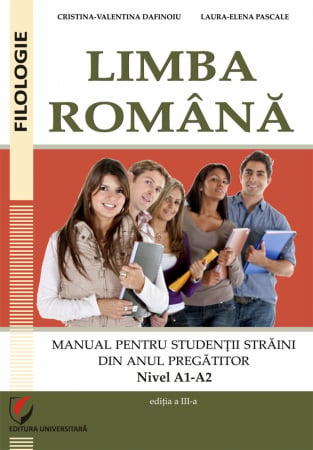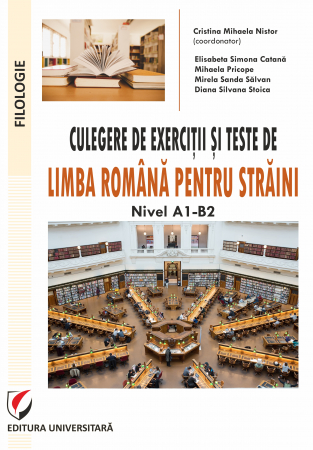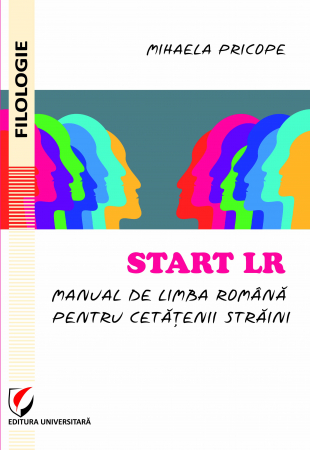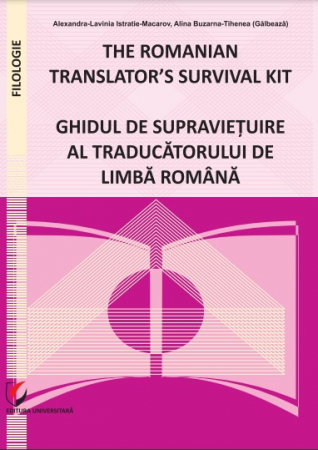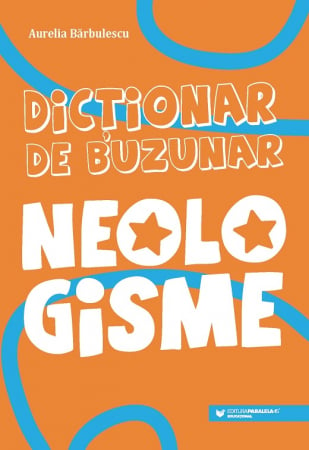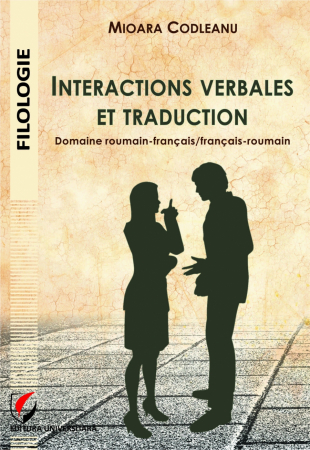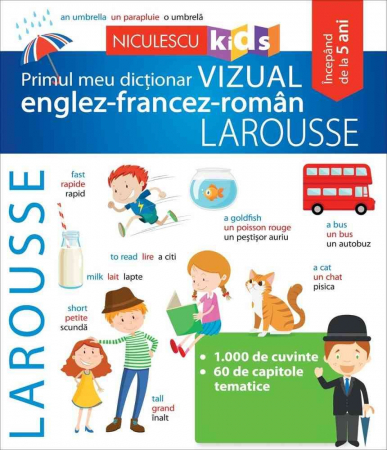Manuscript proposals: [email protected] / 0745 204 115 //// Tracking orders Individuals / Sales: 0745 200 357 / Orders Legal entities: 0721 722 783
6359.png) Economic French through texts. Reading and textual production routes in French as a foreign language
Economic French through texts. Reading and textual production routes in French as a foreign language
6359.png)
ISBN: 978-606-28-0328-5
DOI: 10.5682/9786062803285
Publisher year: 2015
Edition: II, revizuita si adaugita
Pages: 254
Publisher: Editura Universitară
Author: Monica Vlad
Product Code:
9786062803285
Do you need help?
0745 200 357
- Download (1)
- Authors
- Content
- More details
- Reviews (0)
-
Economic French through texts. Reading and textual production routes in French as a foreign language
Download
Monica Vlad
FOREWORD OF THE SECOND EDITION / 7
PREFACE TO THE FIRST EDITION / 11
INTRODUCTION / 15
PART ONE: THEORETICAL REFERENCES ON READING IN FRENCH AS A FOREIGN LANGUAGE / 19
Reading - a fact of understanding / 20
What happens in a foreign language from the point of view of reading comprehension? / 23
Text grammar, speech analysis and reading economic texts / 27
Discursive communities, types of discourse and issues related to the choice of the corpus / 29
Reading methods and approach to economic texts / 33
A few reminders on thematic content / 36
A typology of possible reading activities / 38
Guide to the second part of the book / 41
PART TWO: READING AND COMPREHENSION ROUTES IN FRENCH AS A FOREIGN LANGUAGE / 43
1. PRACTICES OF DOCUMENTATION IN ECONOMIC FRENCH. TYPES OF DICTIONARIES AND READING (S) OF TEXTS / 45
I. Read and compare dictionary definitions / 48
II. Identify relevant documentation strategies / 59
2. THE INFORMATIONAL TEXT OF PRESENTATION OF A COMPANY / 67
I. The parameters of a business description / 71
II. Individual work projects / 77
ECONOMIC FRENCH THROUGH TEXTS 253
3. THE DESCRIPTION OF A PRODUCT. CHARACTERISTICS AND INSTRUCTIONS FOR USE. COMMERCIAL ADVERTISING / 83
I. Description of the product in the instructions for use / 86
II. Between description and commercial advertising / 92
III. Commercial advertising / 99
4. INVOICES AND CONTRACTS. ACRONYMS, ABBREVIATIONS, COLLOCATIONS / 105
I. Purchase-sale invoices / 109
II. Drafting of the rental contract / 113
III. Price formation / 118
5. ELEMENTS OF OFFICIAL CORRESPONDENCE / 123
I. The information request letter / 126
II. The letter of complaint and the response to the letter of complaint / 130
III. Application letter / 134
6. SPECIALTY SCIENTIFIC DOCUMENTS. SYNTHESIS OF TEXTS / 139
I. The “thematic dossier” / 143
II. The presentation of his work. Some methodological advice / 157
7. TEXTS ON ECONOMIC JOURNALISM. SCIENTIFIC EXTENSION PRACTICES / 165
I. The “informative” journalistic text / 170
II. The “argumentative” journalistic text / 173
III. Grouping of texts on the same subject / 177
IV. Extension practices / 183
V. Chat communication project based on reading a journalistic text / 190
PART THREE: TEXTUAL PRODUCTION ROUTES IN FRENCH LANGUAGE OF SPECIALTY. THE JOURNEY OF AN INTERNATIONAL RESEARCH PROJECT / 197
Guide to the third part of the book / 198
1. USES OF FRENCH VEHICULAR LANGUAGE IN ONLINE PLURILINGUAL INTERACTIONS OF STUDENTS NOT SPECIALIZING IN FRENCH. PROJECT DESCRIPTION / 201
I. General context and identification of needs / 202
II. Specific objectives / 206
III. Planned activities / 207
IV. Methodology used / 208
V. Expected results and result indicators / 209
VI. Results promotion plan / 210
VII. Difficulties and challenges of the project / 211
VIII. Project bibliography / 212
2. ELEMENTS EXTRACTED FROM THE FINAL PROJECT REPORT / 213
I. Operation of the consortium / 214
II. Results obtained / 216
III. Immediate or anticipated impact of the project on partner institutions / 218
IV. Special aspects in the course of the project / 219
V. Sustainability of the project / 221
VI. Conclusions / 222
3. THE MARKET, BUSINESS AND ECOLOGY PROJECT. TEACHING ELEMENTS FOR LEARNING IN COLLABORATIVE WRITTEN PRODUCTION IN SPECIALTY FRENCH / 223
I. Instructions / 225
4. EXAMPLES OF BROCHURES MADE BY STUDENTS / 231
I. Elta Ada / 233
II. Enerji S.A./236
CONCLUSIONS / 241
ELEMENTS OF / 244
SOURCES OF SUPPORT DOCUMENTS FOR THE EXERCISES / 249
PREFACE TO THE FIRST EDITION / 11
INTRODUCTION / 15
PART ONE: THEORETICAL REFERENCES ON READING IN FRENCH AS A FOREIGN LANGUAGE / 19
Reading - a fact of understanding / 20
What happens in a foreign language from the point of view of reading comprehension? / 23
Text grammar, speech analysis and reading economic texts / 27
Discursive communities, types of discourse and issues related to the choice of the corpus / 29
Reading methods and approach to economic texts / 33
A few reminders on thematic content / 36
A typology of possible reading activities / 38
Guide to the second part of the book / 41
PART TWO: READING AND COMPREHENSION ROUTES IN FRENCH AS A FOREIGN LANGUAGE / 43
1. PRACTICES OF DOCUMENTATION IN ECONOMIC FRENCH. TYPES OF DICTIONARIES AND READING (S) OF TEXTS / 45
I. Read and compare dictionary definitions / 48
II. Identify relevant documentation strategies / 59
2. THE INFORMATIONAL TEXT OF PRESENTATION OF A COMPANY / 67
I. The parameters of a business description / 71
II. Individual work projects / 77
ECONOMIC FRENCH THROUGH TEXTS 253
3. THE DESCRIPTION OF A PRODUCT. CHARACTERISTICS AND INSTRUCTIONS FOR USE. COMMERCIAL ADVERTISING / 83
I. Description of the product in the instructions for use / 86
II. Between description and commercial advertising / 92
III. Commercial advertising / 99
4. INVOICES AND CONTRACTS. ACRONYMS, ABBREVIATIONS, COLLOCATIONS / 105
I. Purchase-sale invoices / 109
II. Drafting of the rental contract / 113
III. Price formation / 118
5. ELEMENTS OF OFFICIAL CORRESPONDENCE / 123
I. The information request letter / 126
II. The letter of complaint and the response to the letter of complaint / 130
III. Application letter / 134
6. SPECIALTY SCIENTIFIC DOCUMENTS. SYNTHESIS OF TEXTS / 139
I. The “thematic dossier” / 143
II. The presentation of his work. Some methodological advice / 157
7. TEXTS ON ECONOMIC JOURNALISM. SCIENTIFIC EXTENSION PRACTICES / 165
I. The “informative” journalistic text / 170
II. The “argumentative” journalistic text / 173
III. Grouping of texts on the same subject / 177
IV. Extension practices / 183
V. Chat communication project based on reading a journalistic text / 190
PART THREE: TEXTUAL PRODUCTION ROUTES IN FRENCH LANGUAGE OF SPECIALTY. THE JOURNEY OF AN INTERNATIONAL RESEARCH PROJECT / 197
Guide to the third part of the book / 198
1. USES OF FRENCH VEHICULAR LANGUAGE IN ONLINE PLURILINGUAL INTERACTIONS OF STUDENTS NOT SPECIALIZING IN FRENCH. PROJECT DESCRIPTION / 201
I. General context and identification of needs / 202
II. Specific objectives / 206
III. Planned activities / 207
IV. Methodology used / 208
V. Expected results and result indicators / 209
VI. Results promotion plan / 210
VII. Difficulties and challenges of the project / 211
VIII. Project bibliography / 212
2. ELEMENTS EXTRACTED FROM THE FINAL PROJECT REPORT / 213
I. Operation of the consortium / 214
II. Results obtained / 216
III. Immediate or anticipated impact of the project on partner institutions / 218
IV. Special aspects in the course of the project / 219
V. Sustainability of the project / 221
VI. Conclusions / 222
3. THE MARKET, BUSINESS AND ECOLOGY PROJECT. TEACHING ELEMENTS FOR LEARNING IN COLLABORATIVE WRITTEN PRODUCTION IN SPECIALTY FRENCH / 223
I. Instructions / 225
4. EXAMPLES OF BROCHURES MADE BY STUDENTS / 231
I. Elta Ada / 233
II. Enerji S.A./236
CONCLUSIONS / 241
ELEMENTS OF / 244
SOURCES OF SUPPORT DOCUMENTS FOR THE EXERCISES / 249
The second edition of this book, revised and completed, responds not only to a typographical need, the first edition of the book being out of stock, but above all to a need to revise the structure of the book, a need resulting from the discussion with my colleagues and from the advancement of my research in teaching French for business.
Indeed, two years after the publication of the first edition and following many work experiences putting at the center of the teaching process the practice of written comprehension in a specialty language, I can measure the relevance of my proposals as well as their originality in the international research landscape.
The fact of proposing a didactic approach based on the principles of reading in French as a foreign language which combines two different but complementary „inputs” in the subject allowed me to give the opportunity to teachers and students to wonder as much about the typological peculiarities of the documents to be inserted in a French as a foreign language course intended for economists as well as the peculiarities of the different reading procedures to be mobilized for the decryption of these documents. It is this dual perspective of approach, illustrated in the pages for teachers, that has been praised by colleagues who have used the book in their lessons.
The reflection on the peculiarities of reading in a foreign language class which precedes these exercises, and of which we find traces in the first part of the book, represents a useful guide for trainers who thus feel reassured in the construction of their didactic course. .
During the writing period of the book and in the years following its publication, I also coordinated a research project on the uses of French as a vehicular language in the online communication of students who do not specialize in French.
This large-scale project, funded by the Agence Universitaire de la Francophonie during the period 2012-2014, involving collaboration with research colleagues from the universities of Constanta, Galatasaray (Istanbul), Sofia (St. Clement University of Ohrid ), and Saint Petersburg (State University of Economics and Finance) allowed me to revisit the issue of the training needs of non-language specialist students, to propose research on this subject as well as a online remediation course. This is a didactic course based on learning communication and specialized written production which is a direct extension of my questions concerning the teaching / learning of French for business. I therefore decided to complete this book with a section on the teaching / learning of written production in French as a specialty language.
This project also gave me the opportunity to distribute my book on business French in the academic contexts of my partners. Following discussions with them as well as with other colleagues involved in drafting international (French-speaking) scientific research projects, I understood that it was useful to report on my research and my work in a format that meets both the training needs in written production of students and the writing needs of research projects in university teaching of fellow researchers.
This is the reason why this second edition of the book is enriched by a third part on the project Uses of French as a vehicular language in online communication for students who are not specialists in French. I have included elements of a different order:
- the detailed description of the project with all its theoretical links,
- extracts from the final scientific report including in particular the developments of the project between its starting point and its end point,
- extracts from the experimental didactic path oriented towards written production offered to students during the project (as well as examples of productions obtained from students)
It seems to me, at the end of the writing of this second edition of the book, that the new structure of this one diversifies the answers to the major question which is, at the bottom, at the origin of the writing: how to improve the '' teaching French as a foreign language to an audience of students who are not specialists in the language, an expanding audience in a Europe with increasingly permeable borders and in which professional skills must be coupled with mastery of vehicular languages ? The answers offered here are multiple and are aimed at trainers, program designers and students themselves.
Indeed, two years after the publication of the first edition and following many work experiences putting at the center of the teaching process the practice of written comprehension in a specialty language, I can measure the relevance of my proposals as well as their originality in the international research landscape.
The fact of proposing a didactic approach based on the principles of reading in French as a foreign language which combines two different but complementary „inputs” in the subject allowed me to give the opportunity to teachers and students to wonder as much about the typological peculiarities of the documents to be inserted in a French as a foreign language course intended for economists as well as the peculiarities of the different reading procedures to be mobilized for the decryption of these documents. It is this dual perspective of approach, illustrated in the pages for teachers, that has been praised by colleagues who have used the book in their lessons.
The reflection on the peculiarities of reading in a foreign language class which precedes these exercises, and of which we find traces in the first part of the book, represents a useful guide for trainers who thus feel reassured in the construction of their didactic course. .
During the writing period of the book and in the years following its publication, I also coordinated a research project on the uses of French as a vehicular language in the online communication of students who do not specialize in French.
This large-scale project, funded by the Agence Universitaire de la Francophonie during the period 2012-2014, involving collaboration with research colleagues from the universities of Constanta, Galatasaray (Istanbul), Sofia (St. Clement University of Ohrid ), and Saint Petersburg (State University of Economics and Finance) allowed me to revisit the issue of the training needs of non-language specialist students, to propose research on this subject as well as a online remediation course. This is a didactic course based on learning communication and specialized written production which is a direct extension of my questions concerning the teaching / learning of French for business. I therefore decided to complete this book with a section on the teaching / learning of written production in French as a specialty language.
This project also gave me the opportunity to distribute my book on business French in the academic contexts of my partners. Following discussions with them as well as with other colleagues involved in drafting international (French-speaking) scientific research projects, I understood that it was useful to report on my research and my work in a format that meets both the training needs in written production of students and the writing needs of research projects in university teaching of fellow researchers.
This is the reason why this second edition of the book is enriched by a third part on the project Uses of French as a vehicular language in online communication for students who are not specialists in French. I have included elements of a different order:
- the detailed description of the project with all its theoretical links,
- extracts from the final scientific report including in particular the developments of the project between its starting point and its end point,
- extracts from the experimental didactic path oriented towards written production offered to students during the project (as well as examples of productions obtained from students)
It seems to me, at the end of the writing of this second edition of the book, that the new structure of this one diversifies the answers to the major question which is, at the bottom, at the origin of the writing: how to improve the '' teaching French as a foreign language to an audience of students who are not specialists in the language, an expanding audience in a Europe with increasingly permeable borders and in which professional skills must be coupled with mastery of vehicular languages ? The answers offered here are multiple and are aimed at trainers, program designers and students themselves.
If you want to express your opinion about this product you can add a review.
write a review

![Economic French through texts. Reading and textual production routes in French as a foreign language [1] Economic French through texts. Reading and textual production routes in French as a foreign language [1]](https://gomagcdn.ro/domains/editurauniversitara.ro/files/product/large/le-francais-economique-par-des-textes-itinraires-de-lecture-et-de-production-textuelle-en-franais-langue-trangre-698-827204.jpg)
